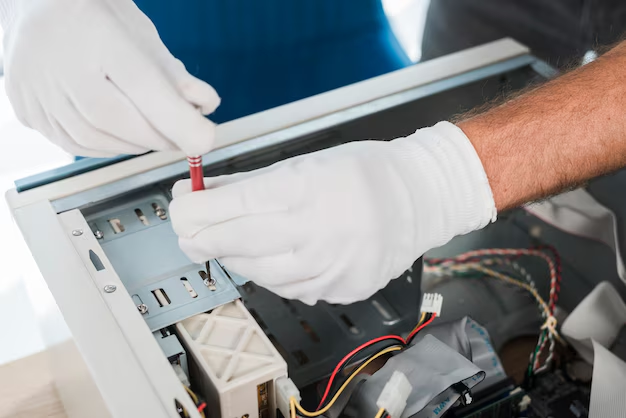Can the EcoFlow Delta 2 Really Power Your Refrigerator?
As households continue to seek energy solutions that bridge convenience with sustainability, portable power stations like the EcoFlow Delta 2 are drawing interest. Key among consumers’ concerns is whether these compact energy savers can effectively power everyday appliances like refrigerators. Let's delve into how the EcoFlow Delta 2 performs in this capacity and explore other relevant energy-saving considerations.
Harnessing Portable Power: The EcoFlow Delta 2
What Makes the EcoFlow Delta 2 Stand Out?
EcoFlow’s Lineup and Features: The EcoFlow Delta 2 is part of a renowned series of portable power stations known for high capacity and multiple output ports, including USB, AC outlets, and DC connectors. Its wide range of applications makes it a popular choice for campers, people living in areas with unreliable grids, or those experiencing frequent power outages.
Power Capacity and Versatility: With its robust battery, the Delta 2 boasts an impressive watt-hour capacity, generally offering between 1,000 to 2,000 watt-hours. This makes it capable of running several small devices simultaneously, supporting everything from smartphones to small kitchen appliances.
Refrigerator Power Needs
Understanding Refrigerator Energy Consumption: Refrigerators are one of the most important appliances in a home but also among the more energy-demanding ones. They usually require anywhere from 100 to 800 watts per hour, depending on size, model efficiency, and environmental conditions.
Startup Watts vs. Running Watts: A critical aspect of powering a refrigerator is accommodating its startup wattage, which can be two to three times its running wattage. This burst of energy when the motor kicks on is essential from an energy supply perspective.
Can the EcoFlow Delta 2 Power a Refrigerator?
Matching Specs and Needs
Compatibility Considerations: To determine if the EcoFlow Delta 2 can power a refrigerator, you'll need to compare its continuous and peak output capacities against the refrigerator’s wattage requirements. If its peak output surpasses the fridge’s startup power demand, the Delta 2 should manage your needs.
Efficiency Post-Power Outage: In scenarios of extended power outages, the Delta 2’s capacity to keep a refrigerator running is significant, allowing for preservation of food without wastage, albeit typically in shorter bursts rather than continuous operation due to battery limitations.
Practical Examples
To illustrate this further, consider a common scenario: a midsize refrigerator typically runs at about 200 watts but requires up to 600 watts at startup. The Delta 2, with an output capacity of more than 1800 watts, can handle this startup surge comfortably, providing around 5 to 8 hours of run time depending on usage and the specific energy efficiency of the refrigerator.
Strategies for Maximizing Energy Efficiency
Monitoring Energy Use
Understanding the Load: Use energy meters or smart plugs to monitor how much power your fridge consumes over time, ensuring the Delta 2’s power is utilized most efficiently.
Peak Usage Times: Where possible, time your refrigerator usage to coincide with renewable energy harvesting, like using solar panels to recharge the Delta 2, thereby extending off-grid functionality.
Supplementing Power with Renewables
Solar Integration: Adding solar panels to recharge the Delta 2 can significantly extend operational hours. This synergy allows for a more sustainable, off-grid power solution, reducing reliance on traditional energy sources.
Energy Saving Practices: Practices such as consolidating refrigerator contents to minimize loss of cool air during opening can also optimize energy use. Ensuring that seals are intact and the fridge is set to optimal temperatures further helps in conserving battery life.
Visual Overview: Key Insights on Powering Your Fridge with the Delta 2
Here's a quick breakdown:
- 🔋 Know Your Needs: Verify your refrigerator’s wattage—both running and startup.
- 🔄 Efficient Use: Monitor use patterns and adapt by running during minimal usage periods.
- 🌞 Renewable Recharge: Pair with solar for sustained energy independence.
- 🍽️ Smart Consumption: Organize fridge contents and optimize temperature settings.
Beyond Refrigerators: Other Uses of EcoFlow Delta 2
Versatile Energy Deployment
Camping & Outdoor Adventures: Ideal for trips where access to regular power is scarce, the Delta 2 can keep lights on and electronic devices charged.
Emergency Backup: In emergencies, having a backup power supply for communication devices and essentials like small heaters or medical devices is invaluable.
Appealing Features
Portability & Convenience: Weighing considerably less than traditional gas generators, the Delta 2 can be transported easily, enhancing adaptability across various settings.
Sustainability Cred: Given its compatibility with solar panels, users turning towards greener energy solutions will find the Delta 2 an attractive option. This capability not only cuts energy costs in the long run but also aligns with a growing global focus on reducing carbon footprints.
Considerations When Choosing a Portable Power Solution
Battery Technology: Understanding lithium-ion vs. lithium iron phosphate (LiFePO4) can influence decisions based on your longevity and recharge cycle priorities.
Usage Frequency: For daily use, a higher capacity battery may be necessary, whereas occasional use might necessitate less investment in capacity.
Environment & Conditions: Those in harsh climates should consider how environmental conditions will affect energy use and recharge capabilities.
Empower Your Energy Needs
Balancing efficiency with reliability, the EcoFlow Delta 2 demonstrates its utility in powering refrigerators for limited durations amidst other versatile uses. Delving into understanding your appliance’s demands and integrating supplemental strategies like solar charging, can greatly enhance the possibilities of this compact power solution. If you’re living in an energy-conscious household eager to embrace off-grid solutions, the Delta 2 is a practical choice that leaves ample room for exploring sustainable living more robustly.
